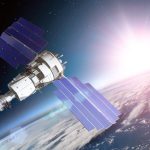The Australian government has launched a four-year plan to upgrade and densify its National Positioning Infrastructure (NPI) to improve position accuracy from coast to coast.
Led by Geoscience Australia (GA), the government is developing a GNSS analysis package to provide 3 cm augmentation via the internet in areas where cell phone service is available. Australia focuses on augmentation because it already has high-visibility coverage from six different satellite navigation constellations — GPS, Galileo, GLONASS and BeiDou plus Japan’s Quasi Zenith Satellite System (QZSS) and NavIC, formerly known as the Indian Regional Navigation Satellite System (IRNSS).
The Australiangovernment has committed to providing AU$64 million (US$48 million) over four years to both fund development of this augmentation package and boost the coverage and capability of its national GNSS network. The plan is to build the network up from its current roughly 100 stations to some 200 stations over the four-year period. GA also plans to establish open data access to the next tier of GNSS sites (potentially 500 to 700 sites).
It will be “basically an RTK network with full coverage,” said Matt Higgins, president of the IGNSS Society of Australia. They also hope to bring many of these RTK networks “into a more organized way of doing things,” he told the May meeting of the National Space-Based Positioning, Navigation, and Timing (PNT) Advisory Board.
Though 85 percent of Australians will be able to use the new 3 cm service it will only be available over a tiny fraction of the country’s geography. The vast majority of Australia’s inhabitants live within 50 kilometers of its coasts, explained Higgins, “which is why we need satellite delivery for many parts of the country.”
To this end an additional AU$161 million (US$120 million) will be dedicated over the four-year period to provide satellite-based augmentation services to the rest of the country.
The details remain to be worked out, said Higgins, but the current test bed has been running three levels of service and he thinks GA will aim to achieve that as well.
Level 1is a GPS single-frequency, standard satellite-based augmentation system (SBAS) with accuracy that is better than 1 meter.
Level 2is dual frequency/dual constellation SBAS using the L1 and L5 signals on GPS and Galileo. This will provide roughly 30 cm accuracy with high integrity levels.
Level 3is a Precise Point Positioning (PPP) capability with better than 10 cm accuracy. This is for those areas not covered by the cell phone-based 3 cm augmentation service.
Higgins said the current single-frequency SBAS would be included to support the many legacy receivers still in use but there would also be a shift to a next-generation SBAS-type signal based on what the International Civil Aviation Organization (ICAO) is developing.
Moreover, said Higgins, Geoscience Australia has been coordinating closely on this with Australia’s Civil Aviation Safety Authority (CASA) and Airservices Australia. “Obviously we want to do this in a very standardized way,” he said.
GA also hopes to become a full Analysis Centre in the International GNSS Service (IGS).
The budget plan contains additional annual operational funding of approximately AU$50million (US$37 million) for both parts including the operation of radio telescopes. The telescopes provide Very Long Baseline Interferometry (VLBI) — the raw data at the heart of the augmentation service. Until now the telescopes have been operating under research grant funding.
GA gained support for the program by underscoring the benefits it would deliver to industry and the population as a whole, according to Higgins.
“The justification to government for this funding was based exclusively on economics, efficiency in industry, safety and innovation,” Higgins said; quoting Gary Johnston, branch head of geodesy and seismic monitoring at Geoscience Australia. “Interestingly we ended up achieving widespread support from many ministers because the positive impact of precise positioning on so many sectors of society was compelling.”
Advisory Board Vice Chair Brad Parkinson said that what the Australians are doing is very foresighted.
“I really commend what I see here,” Parkinson said. “I think we’re all sort of in awe of the down-under people.”
The effort does not end there. The government committed to spending an additional AU$26.0 million (US$20 million) over four years to establish a National Space Agency, which will coordinate domestic space activities for Australia, said Higgins. Then, starting next fiscal year (FY 2019-2020) there will be an additional total of AU$15 million (US$11 million) over three years to establish the International Space Investment project. This effort will provide grants to strategic space projects that generate employment and business opportunities for Australians.
“It’s a good step forward,” said Higgins, “a major step forward.”






